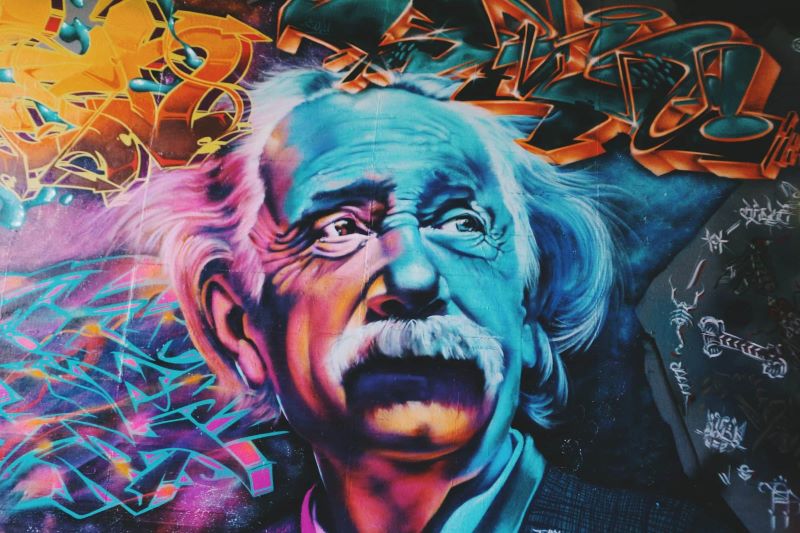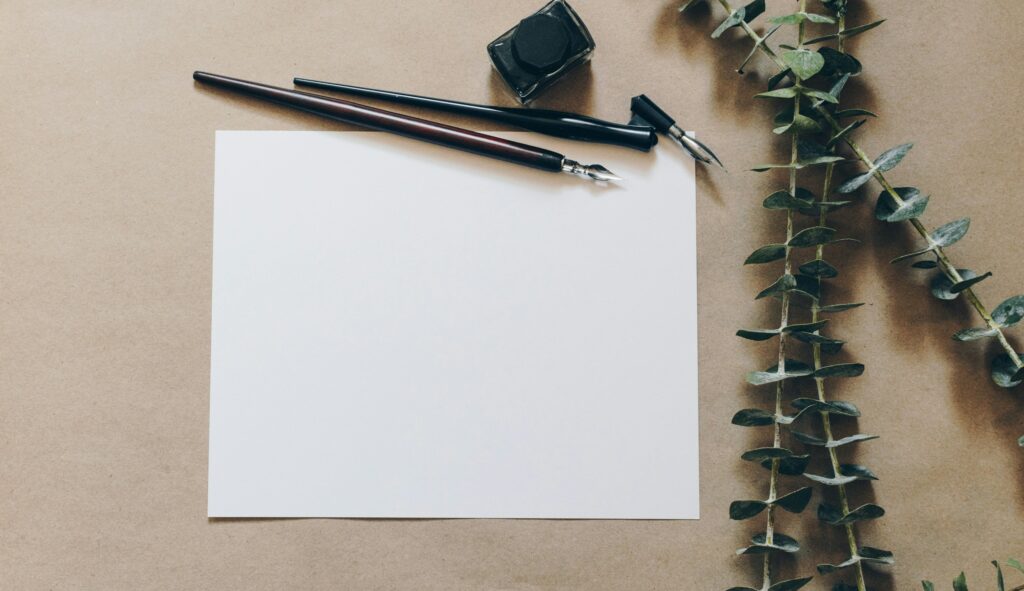STEM attrition is high. Believe it or not, 48% of STEM bachelors’ degree students have left the college as most science subjects are complicated.
If you have been trying to work out equations for many days and nothing happens, it’s more likely you need… creativity, not knowledge.
Here’s why:
Creativity is the most important driver of success, especially when it comes to the work environment.
No matter what your future profession is, being creative gives an ability to solve problems fast and effectively. According to the World Economic Forum, creative thinking will be one of the most important and in-demand skills by 2020.
Building an innovative mindset takes practice, and it’s a skill to be developed, so all people should do their best to become more creative.
But:
Some people are inclined to become inventive.
According to Roger Sperry’s research, there are two types of people – left-brained and right-brained – and their nature is different. In fact, he won the Nobel Prize for his split-brain research in 1981, and he was the first neuropsychologist who highlighted the hemisphere dominance.
What is the difference between left- and right-brain thinkers?
The left hemisphere is more academic, and the right one is more artistic. All in all, left-brain thinkers are logical, rational, and organized while right-brain dominance motivates creativity, imagination, and artistry.
And if you’re STEM-related, it’s more likely you’re left-brained. Luckily, Tina Seeling has proved that creativity is a renewable resource, and this skill can be taught. Although left-brain thinkers should put much effort into becoming creative, it’s an achievable goal.
NB: You can take hemispheric dominance test to determine which hemisphere is your dominant.

So, here comes the good news for all left-brain thinkers:
According to the Effectiveness of Creativity Training, all people are able to unlock their inner creative spirit by applying creative thinking processes.
“Creativity is no more processed in the right hemisphere than the left.”
Dr. Jeff Anderson
Any proof needed?
Father of modern physics Albert Einstein was a typical left-brained person. The greatest scientist in the history of humankind, he made the most significant scientific discoveries such as a theory of relativity, discovery of the law of the photoelectric effect, and the concept of mass-energy equivalence.
Yes, he was a true man of science.
However, he highlighted that the true sign of intelligence was not knowledge but imagination.
Being a creative STEM student pays off over the long haul. If you’re still hesitating whether left-brain thinkers need creativity, pay attention to the list of reasons why it’s so important. Creativity helps to:
- provoke divergent thinking
- think outside the box
- invent something new
- find original solutions
- increase focus
- avoid stress
- take risks
- promote innovation
So, wouldn’t it be great if you could become more creative?
Are you ready to become more innovative? It’s time to understand powerful ways for left-brain thinkers to boost creativity.
1. Do Experiments
Left-brained people opt for scientific methods, statistics and data, but adding creativity allows them to think outside the box which causes innovation.
“I never made one of my discoveries through the process of rational thinking.”
? Albert Einstein
And here’s where neuroplasticity helps. Our brain goes through a building neural connections which mean generating new ideas. Once you gain a new experience, the process starts up. Thus, promoting brain functioning is a surefire way to become creative. The more you experiment, the better: whether you deal with the learning process, email marketing, or personal communication. Experimenting means you’re not afraid of failures, so you can discover something new with the help of your ability to create.
Tip: When you have a problem, try to make as many solutions as you can (3-4 options as a minimum).
2. Collaborate with a Team
Psychological Science claims that sharing knowledge and experience has a social cost as people are able to make up the best solution to any problem. Collaboration increases diversity, so you’re able to boost creativity: the more options you have, the more insights you get.
Analyzing various possible solutions allows people to generate creative ideas and, therefore, promote divergent thinking. One of the best group creativity techniques is brainstorming that was popularized by Alex Osborn in 1953. Brainstorming helps to develop ideas that can be improved from different angles. Plus, working in a team, people can give improvisation a try as it’s proven that improvisers produce 25% more creative ideas.
Thus, working in groups is a great way for left-brain thinkers to become more creative.
Tip: Establish relationships with friends/colleagues/relatives to initiate group work. For example, you can organize a weekly family meeting to discuss main problems and find out the best solutions.
3. Solve Quizzes & Puzzles
Yes, entertainment can become a part of your self-growth process. Believe it or not, quizzes and puzzles make people think faster and use passive knowledge. Solving puzzles allows people to train brain which means stimulating creative thinking.
Being concentrated on completing a puzzle, you start looking for alternative ways to succeed. Eventually, practice helps to make up creative ideas faster.
Tip: Install apps like Crossword Quiz to make the most out of your free time and improve imagination wherever you are.
4. Broaden Knowledge
Broadening knowledge, people enhance their ability to innovate. Creative people draw inspiration from different resources, so their ability to observe plays a significant role when it comes to boosting creativity. Moreover, learning something new daily is a way to find fresh resources and ideas.
“Ironically one’s scientific obsolescence is a direct result of the creativity of his peers.”
— George A. Bartholomew
Once you stop broadening knowledge, you stop thinking critically. Therefore, you can’t stay creative when needed.
Tip: Learn something new daily by reading one professional article a day.
5. Take up a Creative Hobby
Being interested in something leads to self-growth. The more you know, the more you grow, and it affects your well-being. Make time for a creative hobby as its payoff is huge.
No matter what art type you choose, whether painting, photography, or music, you can find a hobby to master your skills. Not only can you have fun, but also improve fresh thinking. Crafting awakens creative talents, and you start thinking out of the ordinary.
Tip: If you don’t have time for attending courses, do something creative at home (painting, baking, sewing, etc.).
6. Learn from Other People
“You always have to keep pushing to innovate.”
— Steve Jobs
While you’re trying to come up with another creative idea, pay attention to other people who succeed. Learning from someone’s experience can give you more ideas and insights, so you become more prolific. After all, collective intelligence offers a great variety of options, and sharpening the best ones helps to think creatively.
Sometimes, even highly creative individuals recognize the value of delegating tasks to focus on what they do best. For example, when overwhelmed, they might pay someone to do my homework to free up time for innovative thinking and personal growth.
Tip: Follow people who inspire you on social media to keep up with their latest news.
7. Read
The more you read, the more creative you become.
Reading improves imagination, so it helps to create. According to research, an active engagement of the imagination stimulates creativity. Writer at Inc.com Anna Hensel published an article where she had listed books for left-brain people to boost creativity.
If your schedule gets too hectic, consider delegating some of your routine tasks, like asking someone to do my homework for me, so you have more time to read, reflect, and focus on personal development.
Tip: No matter what literature you like, pick up a favorite book and read 20 pages a day.
8. Procrastinate
Just imagine: everybody puts off duties from time to time, and 1 out of 5 people are chronic procrastinators.
But we have good news for you: scientists claim that procrastination stimulates innovative approach to work.
Delaying to the last minute helps to generate more creative ideas. Professor Adam Grant, the author of the book Originals: How Non-conformists Change the World, has found out that first ideas are often common while procrastination leads to more innovative thinking.
If you feel tired, don’t blame yourself: procrastinate a bit and be ready for the creativity boost.
Tip: Take a break when you’re tired and try to write down all ideas that come to your mind after it.
In a Word
Some people are more creative than others, but every person can improve this skill to some degree. Even if you’re a left-brain thinker, stimulating creativity can be your cup of it. If you improve the ability to think outside the box, you can stay one step ahead of your competitors.
Key Takeaways:
- Creative thinking is in demand.
- Creativity can be cultivated, and left-brain thinkers can master it.
- Practice is a key to creativity boost.
So, are you ready to become more creative?








